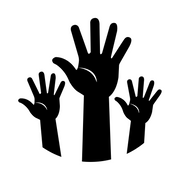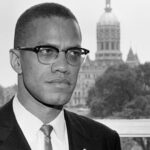The Jazz Age and the Harlem Renaissance are two intertwining phenomena that defined the cultural landscape of America in the 1920s and 1930s, leaving an indelible mark on the country’s artistic, social, and intellectual life. These movements, rich in creativity and vibrancy, signaled a renaissance of African American culture, contributing significantly to the nation’s history and identity. This comprehensive exploration delves into the heart of these eras, uncovering the what, why, how, where, and who, alongside answering the top questions people commonly ask about these pivotal periods.
What Were the Jazz Age and the Harlem Renaissance?
The Jazz Age
The Jazz Age refers to the period during the 1920s and early 1930s when jazz music and dance styles rapidly gained nationwide popularity in the United States. The era was characterized by unprecedented economic prosperity, the flapper culture, speakeasies, and a general sense of rebellion against the conservative norms of the previous generations. Jazz, with its roots in African American musical traditions, epitomized the cultural shift towards modernity and was the soundtrack of this transformative era.
The Harlem Renaissance
The Harlem Renaissance was a cultural, social, and artistic explosion that took place in Harlem, New York, spanning the 1920s into the mid-1930s. It marked a period where African American writers, musicians, artists, and thinkers sought to redefine the Negro identity and seized the opportunity to express their cultural heritage freely. It was a reawakening of African American culture, asserting the value of Black life and creativity against a backdrop of widespread racism and segregation.
Why Did These Movements Begin?
The end of World War I in 1918 brought significant demographic shifts and economic opportunities in the United States, leading to mass migrations of African Americans from the rural South to urban centers in the North. This Great Migration brought about a concentration of talented African Americans in neighborhoods like Harlem, which became the epicenter of cultural innovation. The prosperity of the Roaring Twenties provided the economic backdrop for the flourishing of jazz music and the arts, fostering an environment ripe for the Harlem Renaissance.
How Were These Movements Expressed?
Jazz Age
The Jazz Age was expressed through music, dance, and lifestyle. Jazz music, characterized by its use of improvisation, syncopated rhythms, and blues notes, became the defining feature of the era. Iconic musicians like Louis Armstrong, Duke Ellington, and Bessie Smith became household names, while dance halls and nightclubs like the Cotton Club in Harlem became the hotspots of jazz performances.
Harlem Renaissance
The Harlem Renaissance found its expression through literature, visual arts, music, and theater. It was a time when African American creativity in the arts flourished like never before. Writers like Langston Hughes, Zora Neale Hurston, and Claude McKay explored themes of racial identity, resistance, and pride. Artists such as Aaron Douglas and Jacob Lawrence depicted the African American experience through their work, while the music of the era continued to be dominated by jazz.
Where Did These Movements Take Place?
While the Jazz Age was a nationwide phenomenon, with jazz music influencing cities across America, the Harlem Renaissance was more geographically concentrated in Harlem, New York. However, its cultural impact was felt widely, influencing black communities in Chicago, New Orleans, and beyond.
Who Were the Key Figures?
Jazz Age
- Louis Armstrong: A foundational figure in jazz music, known for his virtuosic trumpet playing and distinctive vocal style.
- Duke Ellington: A bandleader and composer who played a significant role in the evolution of jazz.
- Bessie Smith: Known as the “Empress of the Blues,” her powerful singing style influenced future jazz vocalists.
Harlem Renaissance
- Langston Hughes: A poet, social activist, novelist, and playwright, Hughes was one of the earliest innovators of the then-new literary art form called jazz poetry.
- Zora Neale Hurston: An author and anthropologist who played a pivotal role in cultural anthropology and chronicled African American folklore.
- Aaron Douglas: An artist whose work captured the essence of the Harlem Renaissance through visuals that combined traditional African motifs with a modernist aesthetic.
Top 20 Questions About the Jazz Age and the Harlem Renaissance
- When did the Jazz Age and the Harlem Renaissance occur?
- The Jazz Age and the Harlem Renaissance occurred during the 1920s and 1930s.
- What genres of music were popular during the Jazz Age?
- Jazz and blues were the dominant music genres.
- What was the significance of the Harlem Renaissance?
- It marked the first time that mainstream publishers and critics took African American literature seriously and that African American literature and arts attracted significant attention from the nation at large.
- How did the Great Migration influence these movements?
- The Great Migration brought a significant African American population to northern cities like New York, which became the epicenter of cultural movements like the Harlem Renaissance.
- Were women involved in the Harlem Renaissance?
- Yes, women played a crucial role. Notable figures include Zora Neale Hurston (writer) and Augusta Savage (sculptor).
- How did the Harlem Renaissance impact American culture?
- It reshaped American culture by introducing African American cultural expressions into the mainstream and challenging the racist ideologies of the time.
- What were some popular speakeasies during the Jazz Age?
- The Cotton Club and the Savoy Ballroom in Harlem were famous speakeasies.
- Who were some famous writers of the Harlem Renaissance besides Langston Hughes?
- Claude McKay, Countee Cullen, and Jean Toomer were other prominent writers.
- What role did jazz play in the Harlem Renaissance?
- Jazz provided the soundtrack to the Harlem Renaissance, reflecting the new cultural identity being forged by African Americans.
- How did the end of the Jazz Age come about?
- The Great Depression marked the end of the economic prosperity that sustained the Jazz Age.
- What legacy did these movements leave behind?
- They left a legacy of cultural pride, artistic innovation, and significant contributions to American literature, music, and art.
- Did these movements influence each other?
- Yes, the Jazz Age and the Harlem Renaissance were mutually influential, with jazz music playing a significant role in the cultural renaissance in Harlem.
- How were African American artists of the Harlem Renaissance viewed by the wider society?
- While they gained recognition and a measure of respect during the period, many still faced racial prejudice and barriers to mainstream acceptance.
- What was the impact of the Harlem Renaissance on the Civil Rights Movement?
- It laid the groundwork for the Civil Rights Movement by promoting racial pride and challenging stereotypes.
- How did prohibition influence the Jazz Age?
- Prohibition led to the rise of speakeasies where jazz music flourished.
- Can the influence of the Harlem Renaissance be seen in modern art and culture?
- Yes, the Harlem Renaissance’s influence persists in modern art, literature, and music, inspiring generations of African American artists.
- What was the role of the Cotton Club in the Harlem Renaissance?
- The Cotton Club was a prominent venue that featured many African American performers and became an iconic symbol of the Jazz Age.
- Were there any notable collaborations between artists and musicians of the time?
- Yes, collaborations occurred across disciplines, with musicians inspiring poets and artists, and vice versa.
- How did jazz music evolve during the Jazz Age?
- Jazz evolved from Dixieland and ragtime to more sophisticated styles like swing during the Jazz Age.
- What was the social impact of the Harlem Renaissance on Harlem?
- It transformed Harlem into a cultural center, attracting both African Americans and whites to its vibrant community of artists, musicians, and writers.
The Jazz Age and the Harlem Renaissance were more than mere historical footnotes; they were vibrant declarations of cultural identity and artistic brilliance. By celebrating African American heritage and challenging the racial and social hierarchies of the time, these movements laid the foundations for future generations to build upon, ensuring their legacy would resonate far beyond the roar of the 1920s.





